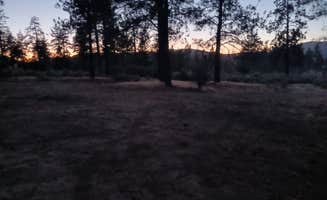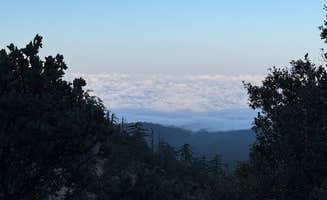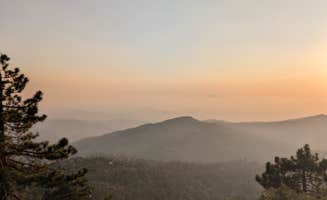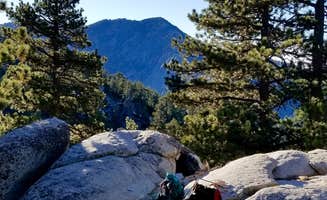Dispersed camping options near Fallbrook, California extend beyond the San Bernardino National Forest into several lesser-known locations. During winter months, temperatures at these higher elevation sites typically range from 30-60°F, while summer brings 70-95°F days with cooler nights. Fire restrictions vary seasonally, with complete bans enforced throughout most summer months due to extreme fire danger in the arid climate.
What to do
Hiking to scenic vistas: Little Thomas Dispersed camping area serves as an excellent base for day hikers exploring the surrounding terrain. Located on forest service roads, this free camping spot provides access to several unmarked but navigable trails.
Wildlife observation: At Thomas Mountain Road, campers can observe native California wildlife in their natural habitat. A recent visitor noted, "Easy travel dirt roads. There are only 3 actual sites with fire rings, but there is plenty of room to camp without rings."
Stargazing opportunities: The higher elevation dispersed sites offer exceptional night sky viewing with minimal light pollution. At South Ridge Yellow Post Sites, one camper reported, "Very nice to find a campsite this private on a weekend in southern California elevation is high enough that temperatures were very enjoyable (mid 80's)."
What campers like
Seasonal temperature advantages: The elevation change provides relief from valley heat during summer months. One visitor to South Ridge Yellow Post Sites recommended, "This is a great area. I recommend you bring extra mosquito repellent. Have fun!"
Privacy between sites: Many dispersed camping areas near Fallbrook feature natural spacing between sites. At Strawberry Junction, "The sites are dispersed and marked with small signs. There is an outhouse towards the top of the site. You must hike in but it is absolutely worth it."
Cell service availability: Unlike many remote camping areas, some dispersed sites maintain reliable connectivity. Thomas Mountain Road offers unexpected tech benefits, as one camper confirmed, "5g Verizon works great."
What you should know
Limited amenities: Most dispersed sites require complete self-sufficiency. Yellow Post #2 at South Ridge offers "No amenities—no toilet, water, or trash—so pack in and out. Fire ring and picnic table on-site."
Navigation challenges: Many access roads lack clear signage or maintenance. A visitor to Chinouapin Zone San Bernardino National Forest observed, "This is a unique spot to camp, because you're met with people backpacking the summit and people going through the PCT!"
Seasonal crowds: Pacific Crest Trail hikers often utilize these dispersed camping areas during peak hiking seasons. Free camping near Fallbrook, California becomes more competitive during spring months when PCT hikers pass through.
Tips for camping with families
Best sites for children: Sites with established boundaries work better for families with young children. South Ridge Yellow Post #2 features a "dirt/sand/rock surface. Site fits up to 8 people and 2 vehicles."
Safety considerations: Wildlife encounters require proper food storage and waste management. "Wildlife includes deer, lizards, snakes, woodpeckers, and lots of squirrels. Mosquitoes come out at dusk—repellent is a must."
Educational opportunities: The diverse ecosystems around Scissors Crossing PCT Parking provide natural learning environments for children studying California plant and animal communities. The area showcases transition zones between desert and mountain ecosystems.
Tips from RVers
Vehicle access limitations: High-clearance vehicles are essential for reaching most dispersed sites. At South Ridge Yellow Post Sites, "Access road is rough and rocky but doable in dry conditions with a careful 2WD."
Size restrictions: Most free camping areas near Fallbrook limit RV length due to narrow access roads and limited turning radius. Small trailers under 20 feet fare better than larger rigs.
Generator regulations: Noise restrictions and fire danger mean generator use is often prohibited. Thomas Mountain Road, also known as Apple Canyon, requires visitors to rely on alternative power sources during their stay.





